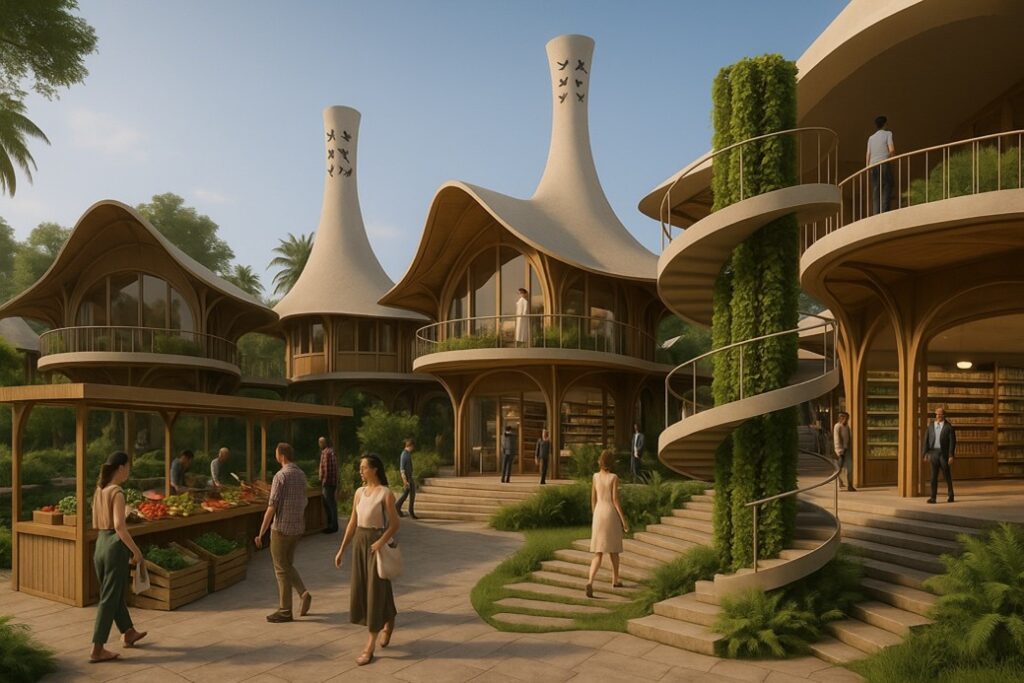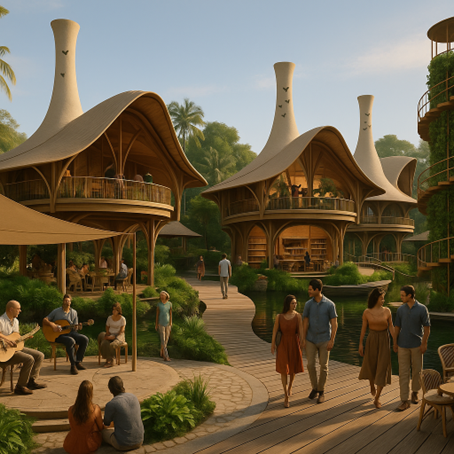This essay was as part of a Ph.D. seminar entitled “Theorizing Infrastructure” for Florida Atlantic University’s graduate program in comparative studies. An overview of the course by professor Stacey Balkan and other essays from students can be found here.
By Maryam Badiei
Respecting nature is what we have forgotten. Listening to it. Designing alongside it, instead of fighting against it.
For decades, South Florida’s built environment has been shaped by the belief that progress means controlling nature — draining wetlands, walling off shorelines and cooling buildings with energy-hungry machines. But as rising seas, intensifying storms and dangerous heat threaten the region’s future, we must ask: What if we remembered how to listen? What if we designed with the wind, the water and the sun, instead of trying to overpower them?
As a designer and researcher from Iran, I have seen firsthand how architecture can adapt to its climate and context while creating beauty and comfort. In Iran’s arid regions, ancient windcatchers funnel breezes through homes; thick walls moderate temperature swings; shaded courtyards create cool, livable spaces. These are not old-fashioned relics — they are powerful design strategies built on respect for environmental limits.

Drawing from these principles, I’ve developed a speculative design vision for South Florida: a floating, elevated eco-community that embraces local climate conditions to create sustainable, resilient and connected living. While the visual images were generated using ChatGPT’s AI tools, the design concepts are grounded in real-world architectural logic and climate adaptation strategies.
At the heart of this vision is a network of small housing clusters, each raised on stilts like mangrove roots to accommodate rising water and tidal flows. Rather than relying on air conditioning, each home features a vertical wind tower that captures the coastal breeze and circulates cool air through its interior. Double-layered roofs allow hot air to escape before it enters the living space, while wide overhangs shade walls and windows from the intense Florida sun. These aren’t just beautiful features — they are practical, climate-responsive solutions.
But resilience isn’t only about the buildings; it’s about the people. In the center of the community stands a spiral hydroponic tower, where residents can grow fresh vegetables using recycled water and low-energy systems. This shared vertical garden enhances food security, reduces dependency on outside supply chains and fosters a sense of community. Around it, small markets, shaded paths and open-air gathering spaces encourage neighbors to slow down, connect and care for the environment together.
A distinctive part of this project is its attention to identity. Too often, modern architecture ignores the local ecosystem and creates anonymous, placeless spaces. In contrast, I propose carving native Florida bird motifs — such as egrets, herons or ospreys — into the architectural details of each housing cluster. These symbols remind residents, especially children, of the wildlife they share their home with. Over time, they help build emotional connections to place and cultivate a culture of ecological stewardship.

My work is influenced by the solarpunk movement — a creative and design philosophy that imagines hopeful, sustainable futures built on renewable energy, local knowledge and community resilience. As scholar Stacey Balkan writes, solarpunk is not just an aesthetic — it’s a form of resistance to extractive, profit-driven systems. My project offers one such alternative: a vision where climate adaptation is collective, not individual; where resilience is shared, not commodified.
I’m also inspired by Gabriel Ojeda-Sagué’s reflections in “Losing Miami,” where he describes how climate change and gentrification intersect. As wealthier residents retreat to higher ground, marginalized communities are pushed into the most flood-prone and vulnerable zones. My design challenges this pattern by proposing elevation as a universal adaptation, not a luxury. In this imagined community, homes rise together; no one is left behind.
This is not a blueprint ready for immediate construction — it’s a prototype, a speculative intervention meant to challenge assumptions and spark new conversations. The technologies it draws on — passive cooling, hydroponic farming, flood-resilient design — already exist. What we need is the will and creativity to integrate them into our communities, not just as technical solutions, but as cultural practices.
South Florida faces profound climate challenges, but also profound opportunities. We can continue pouring concrete, building taller walls and treating the environment as a threat. Or we can chart a different path — one that listens to the rhythms of wind, water and sun; that elevates not only our homes but our sense of shared purpose; and that transforms our relationship with the land from domination to collaboration.
In Iran, we learned long ago that respecting the climate is not a limitation — it’s a foundation for beauty, resilience and survival. I believe this lesson can help shape a new chapter for South Florida: one where homes and neighborhoods breathe with the landscape, where children grow up knowing the names of local birds and plants, and where resilience comes not from isolation, but from care and cooperation.
It’s time to remember how to listen.
Banner image: Another conceptual image of the eco-community generated using ChatGPT’s image generation tools.
Sign up for The Invading Sea newsletter by visiting here. To support The Invading Sea, click here to make a donation. If you are interested in submitting an opinion piece to The Invading Sea, email Editor Nathan Crabbe at nc*****@*au.edu.



